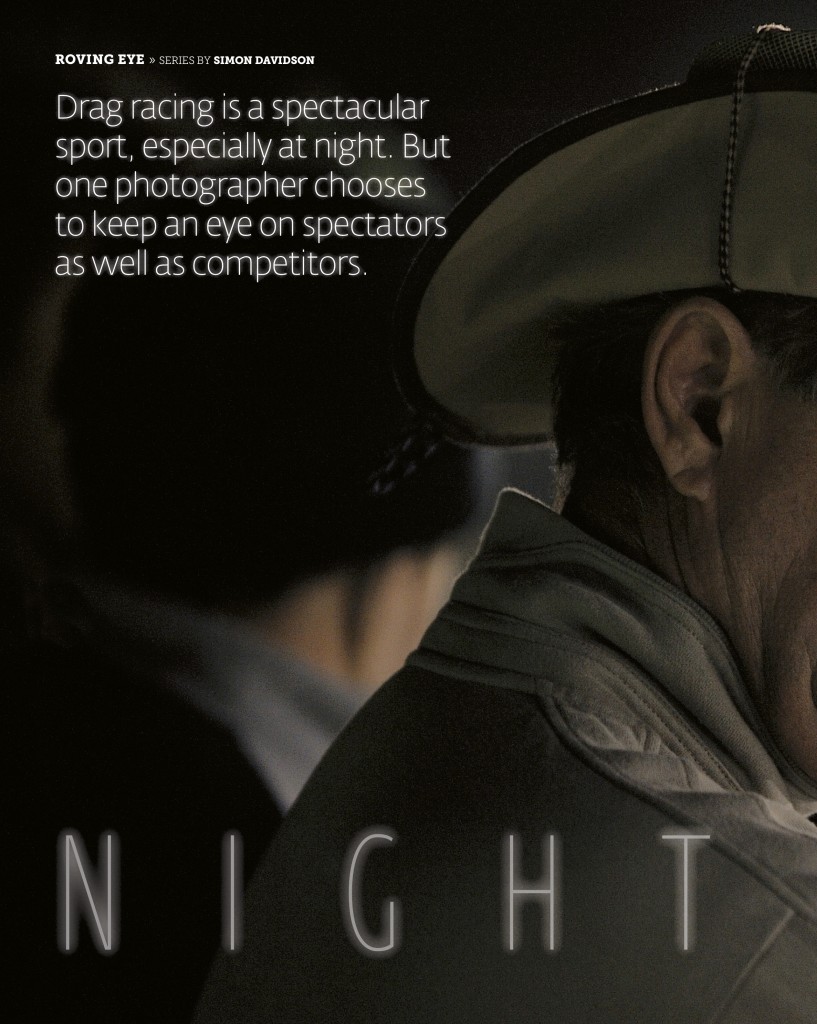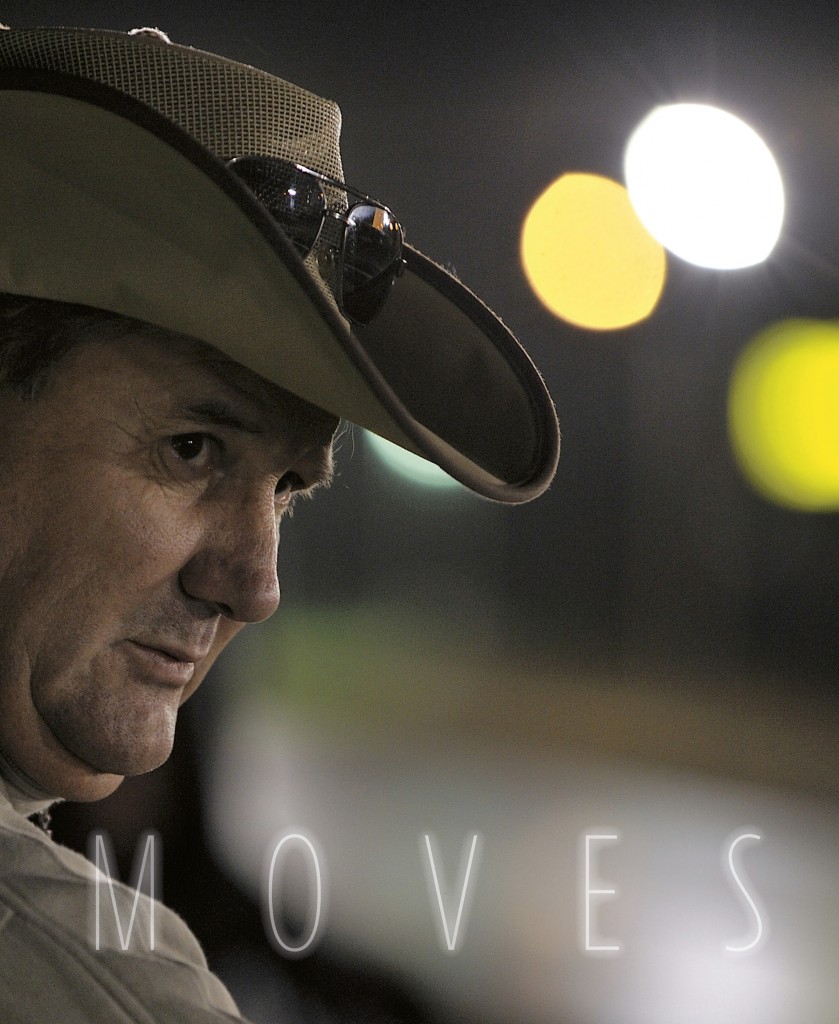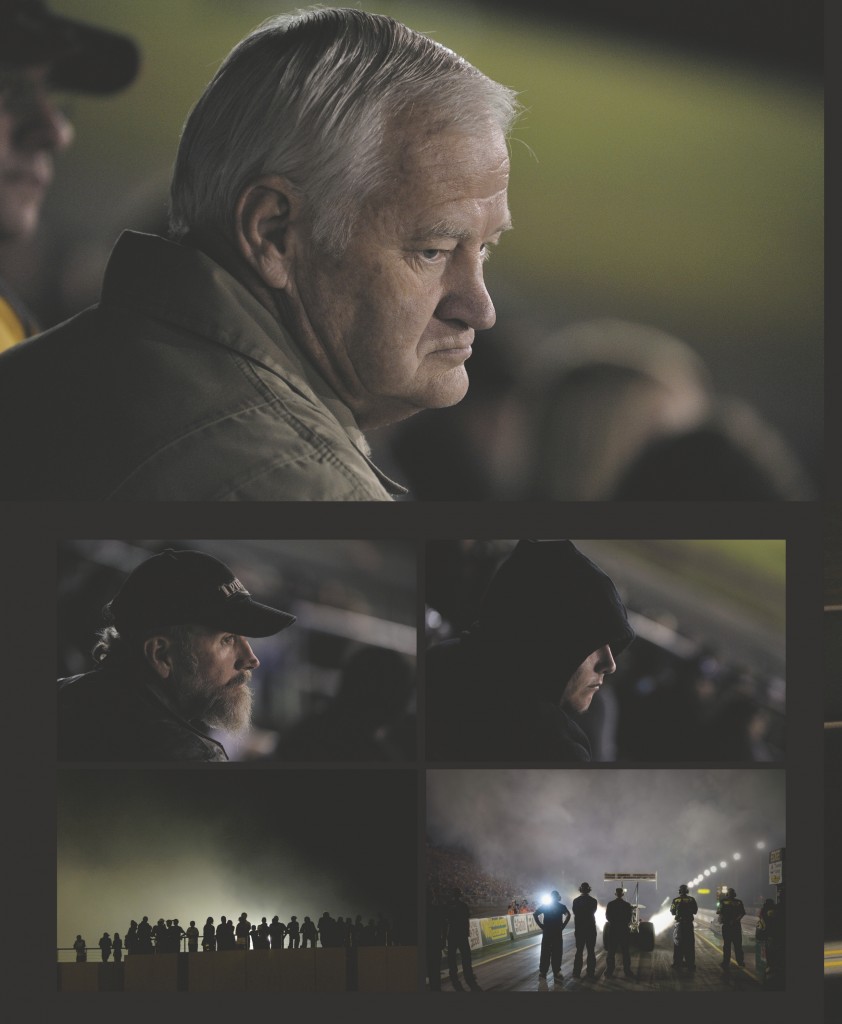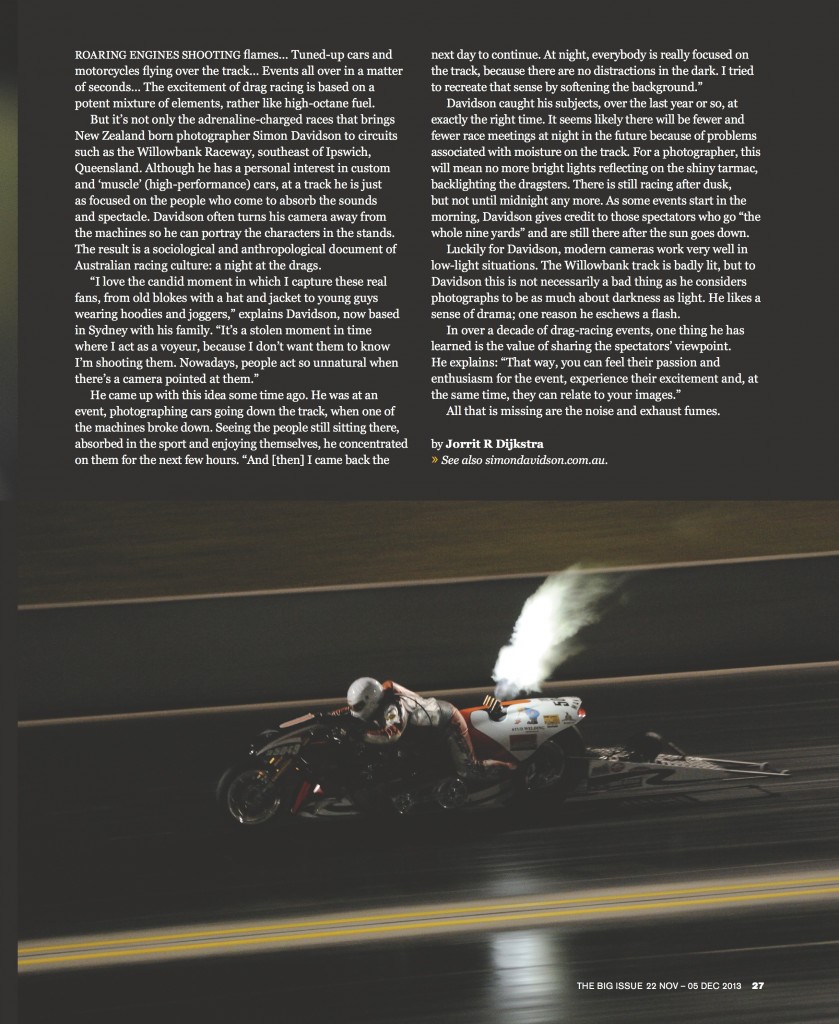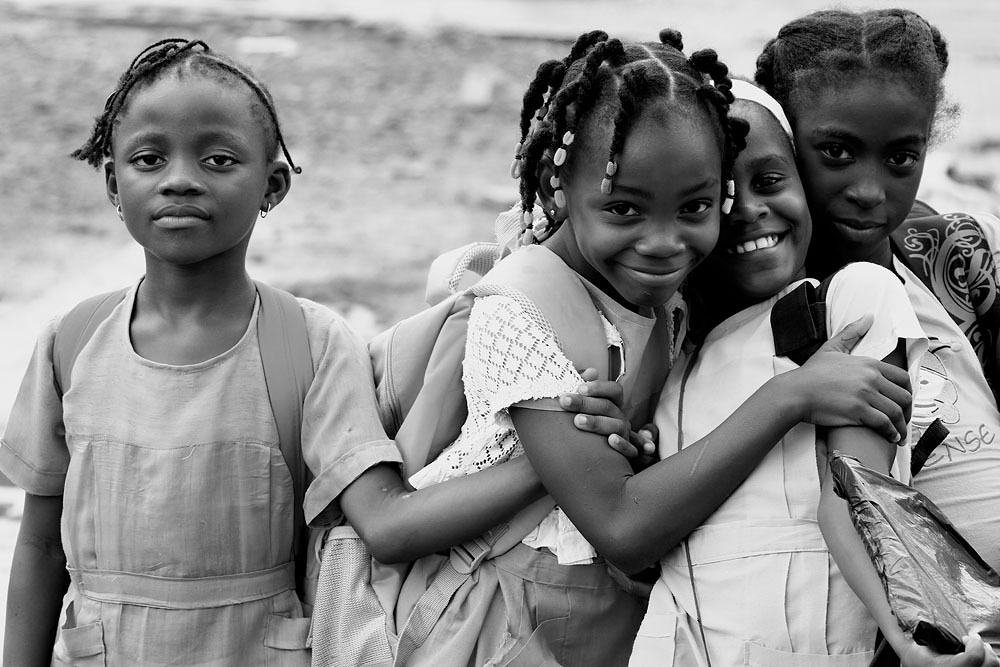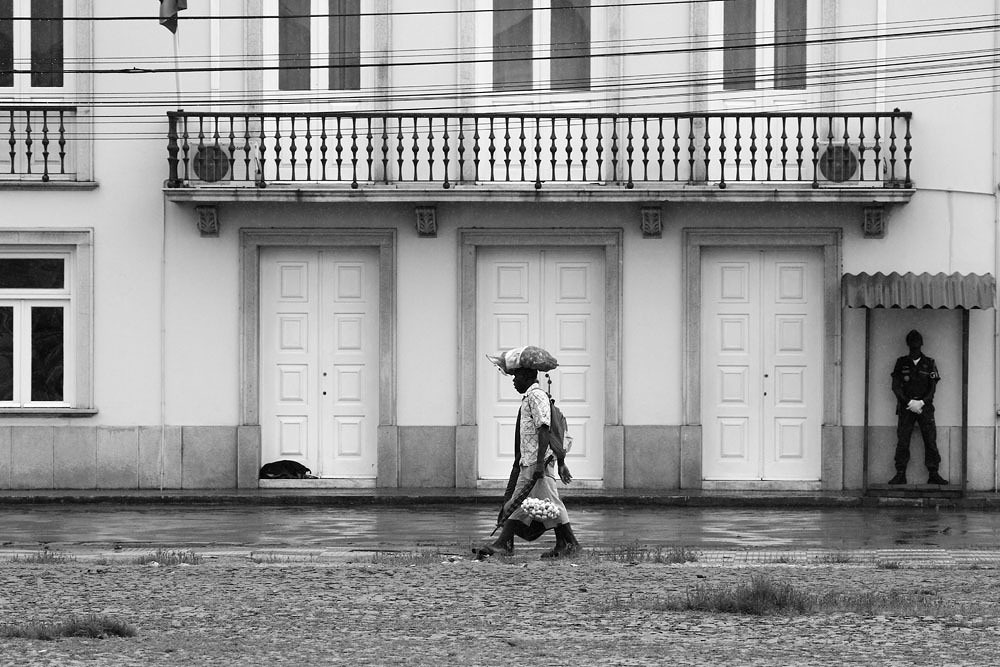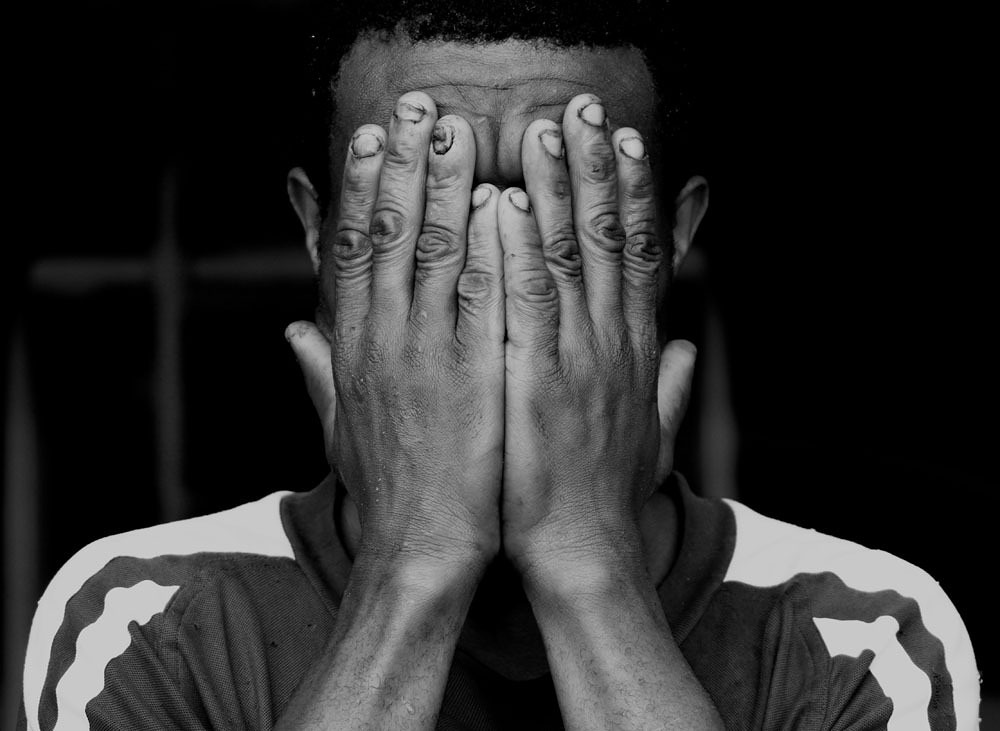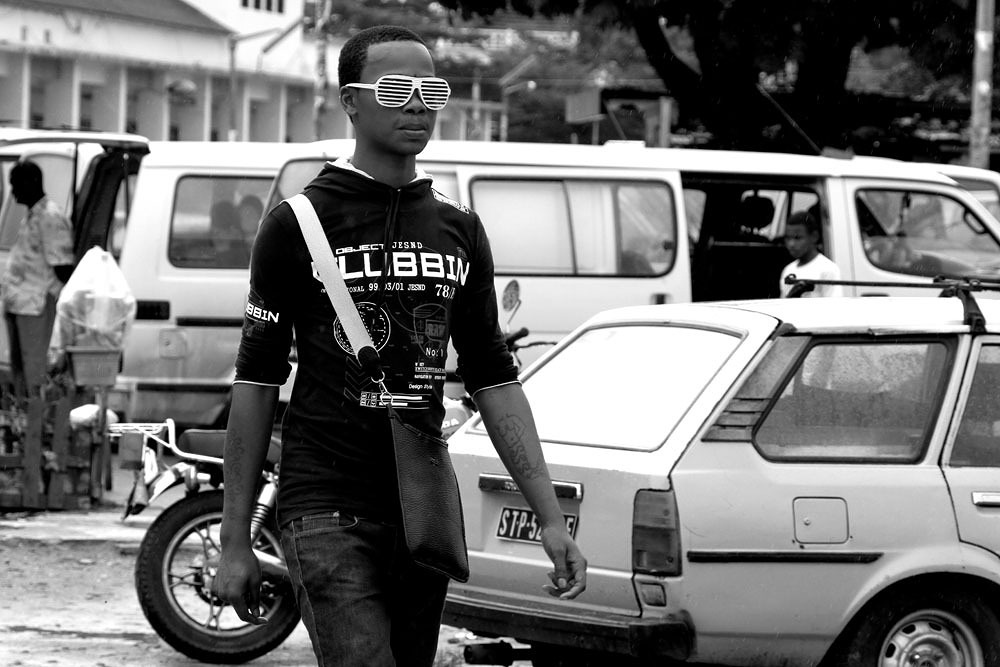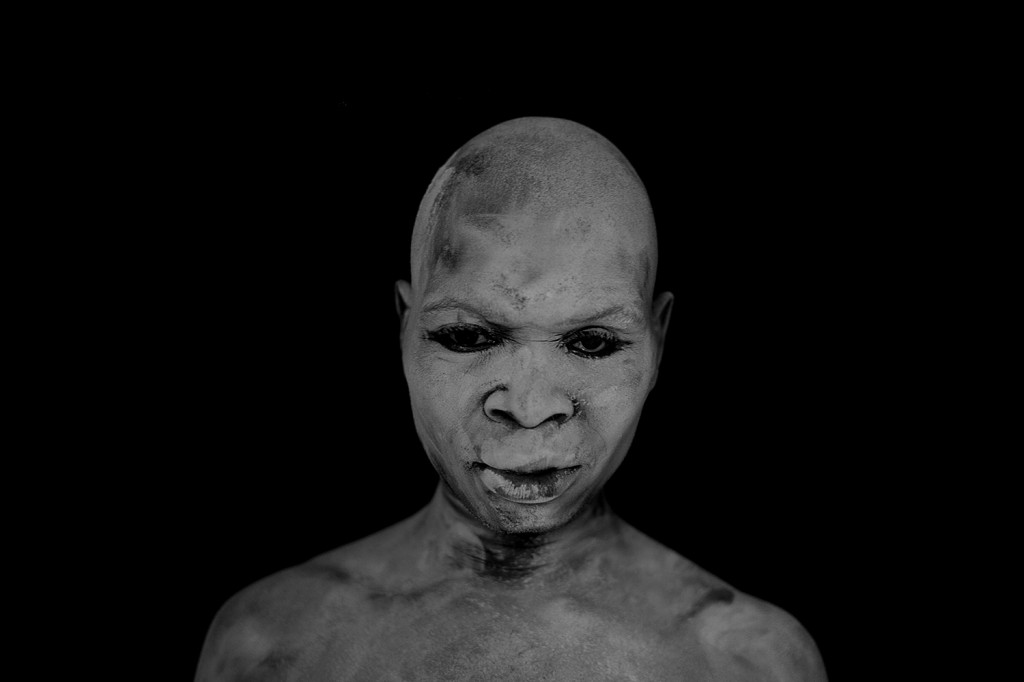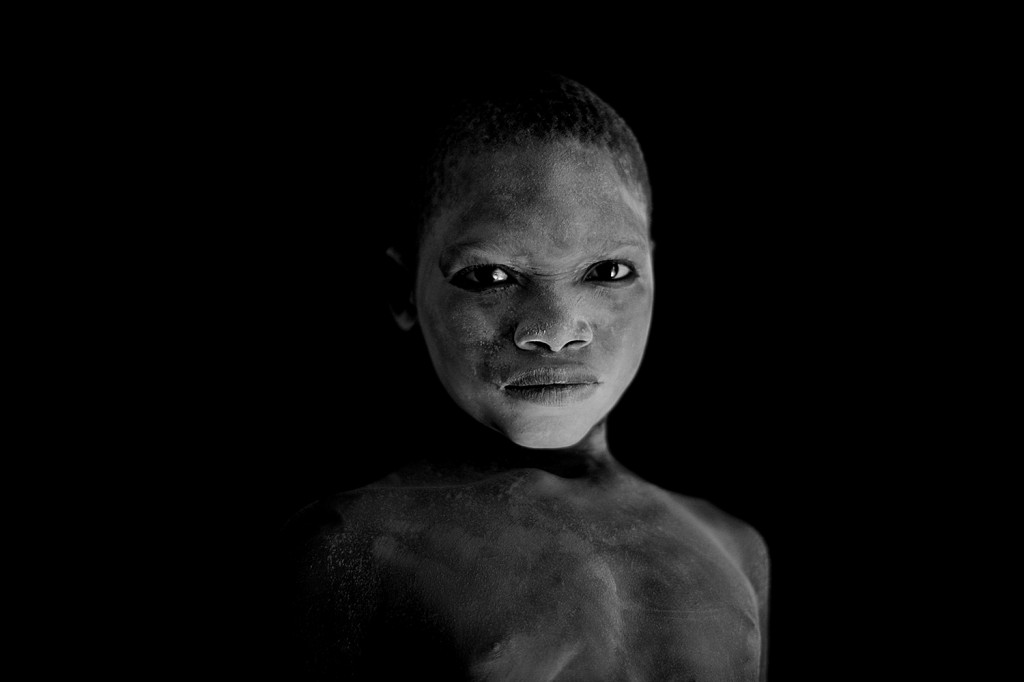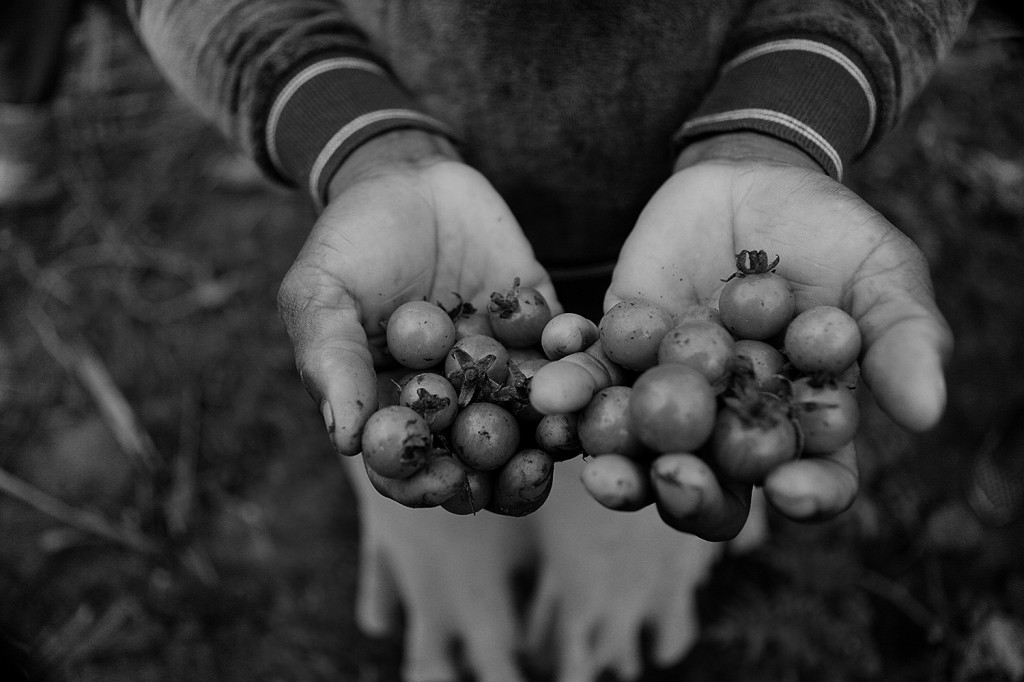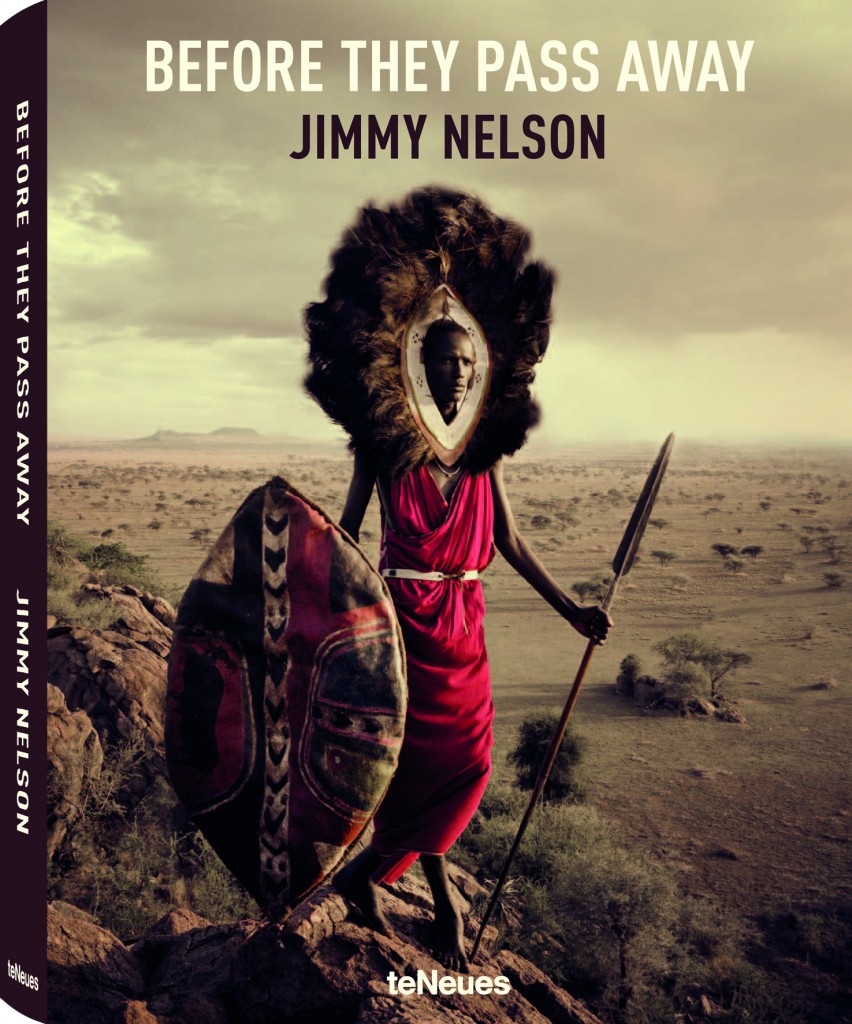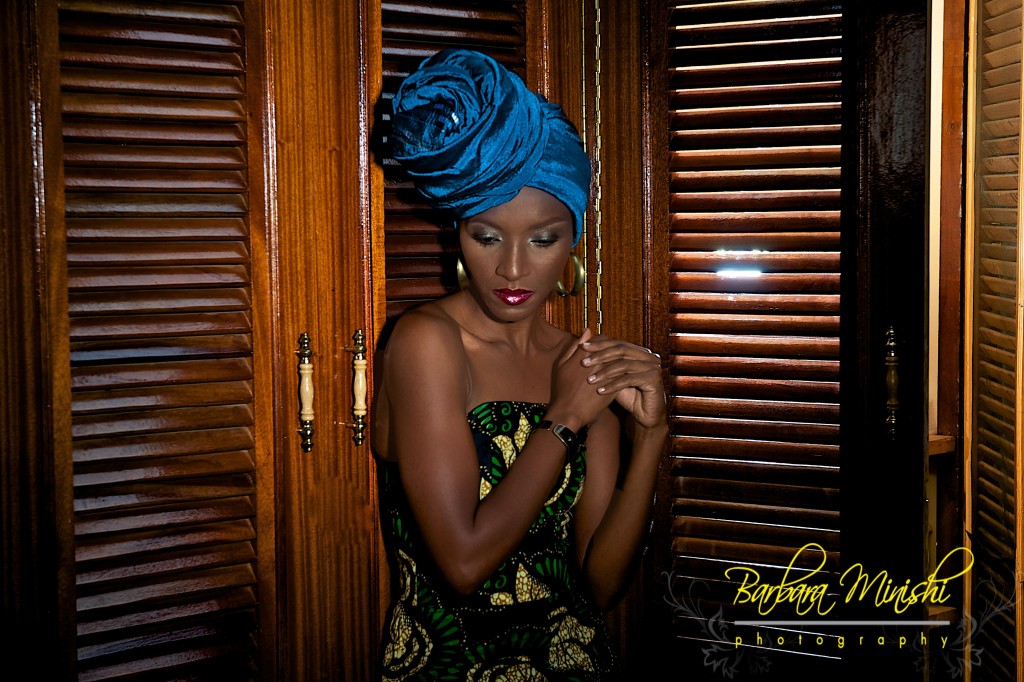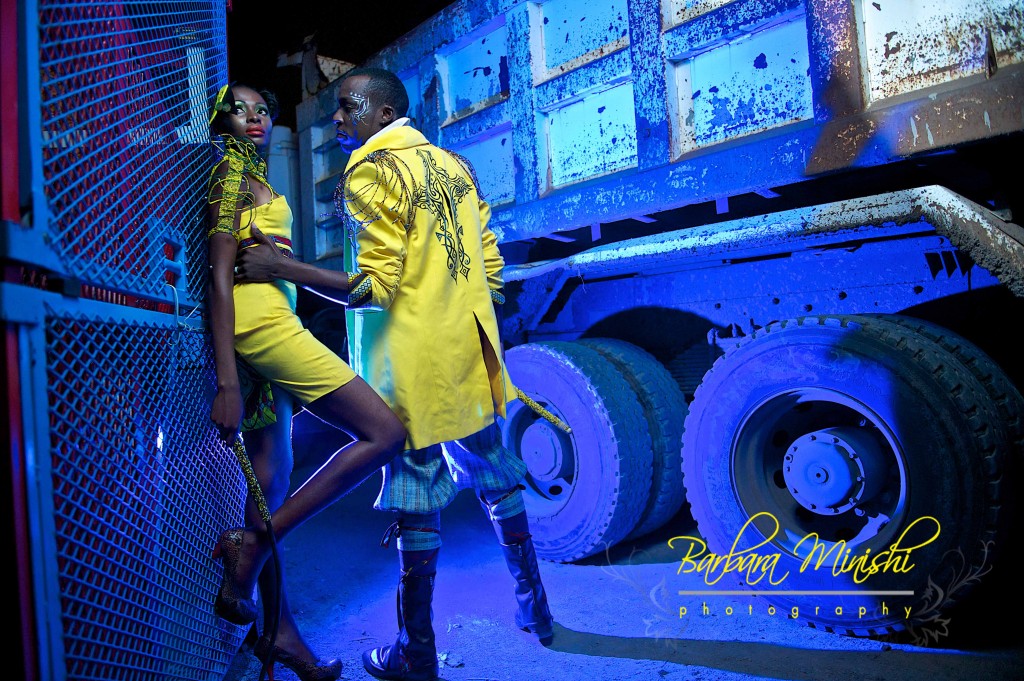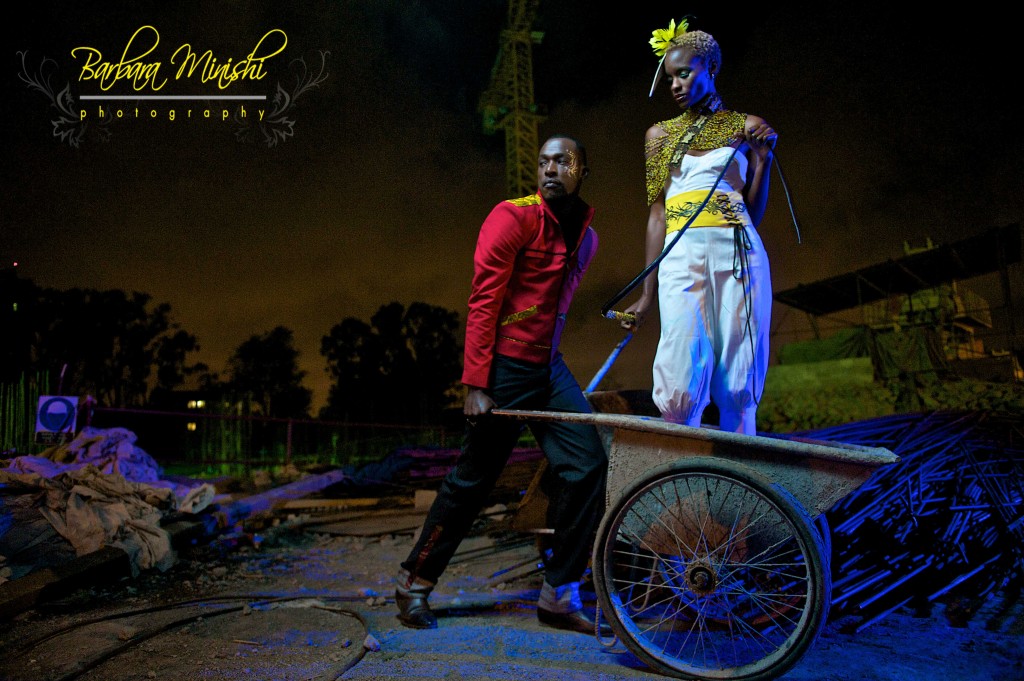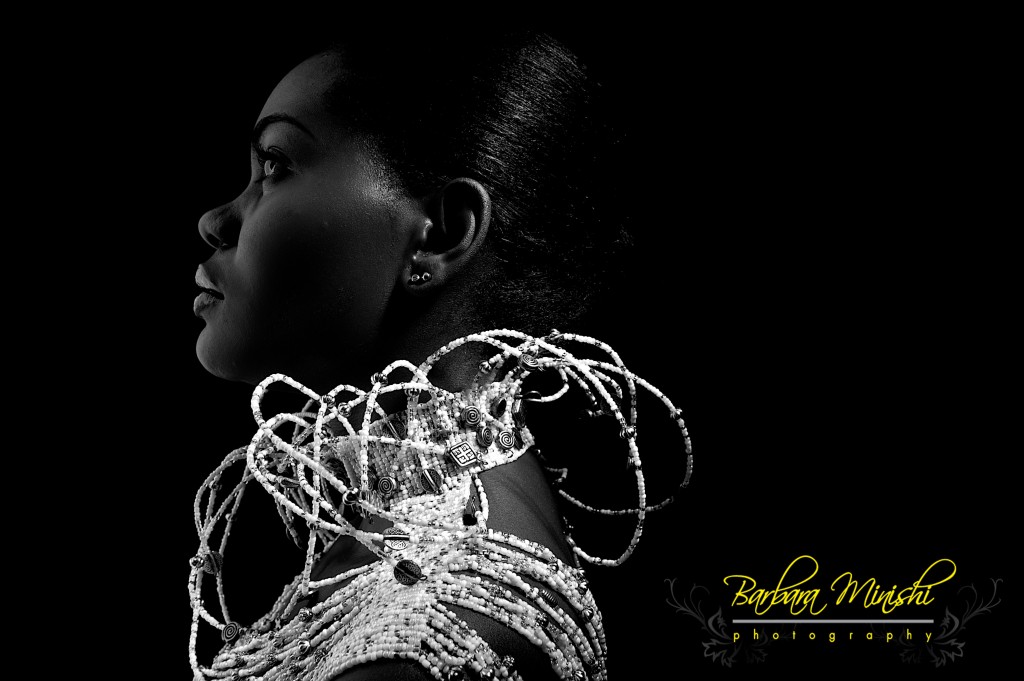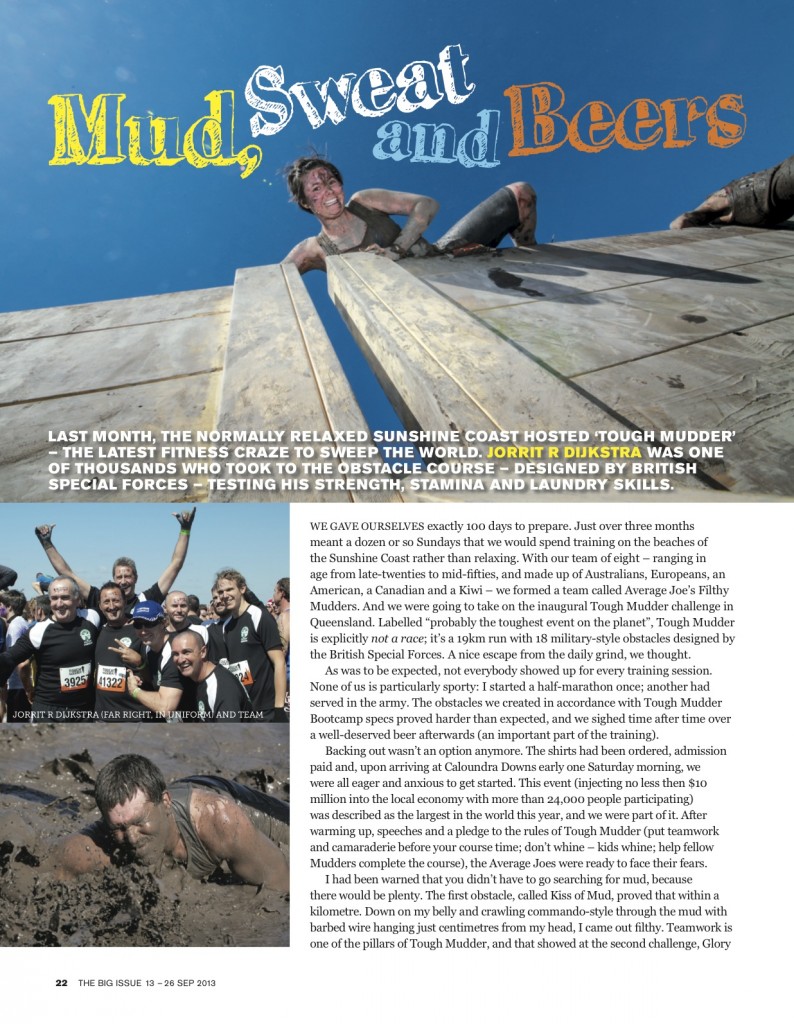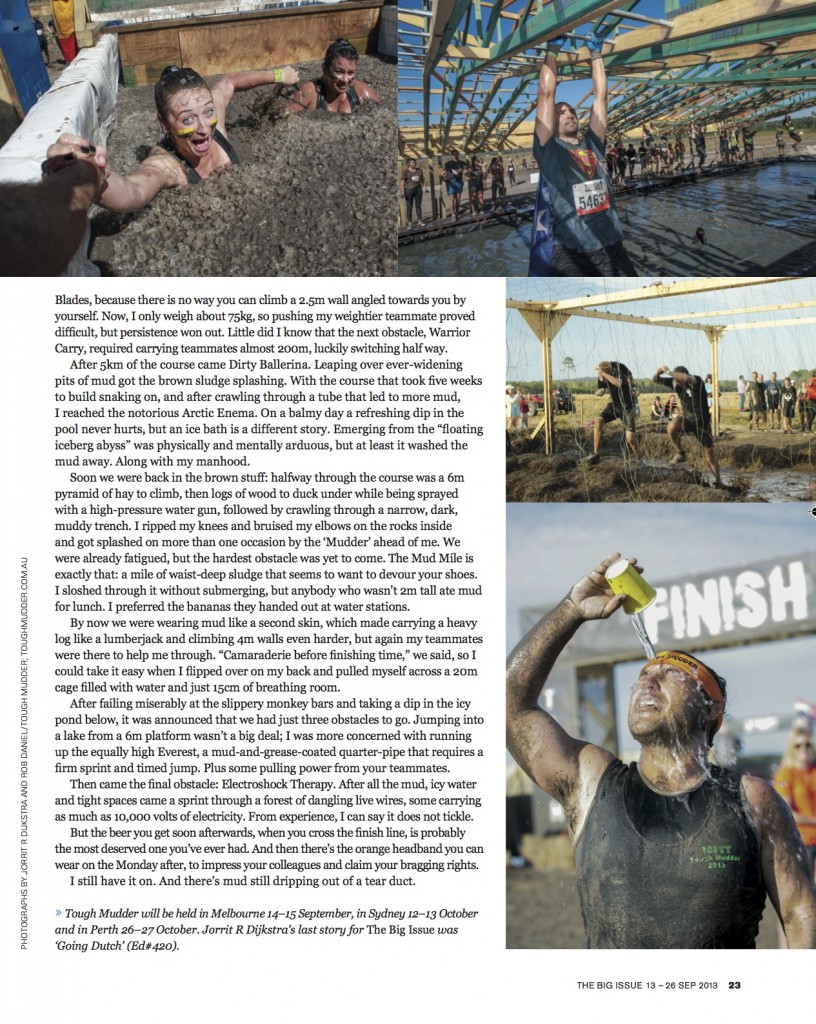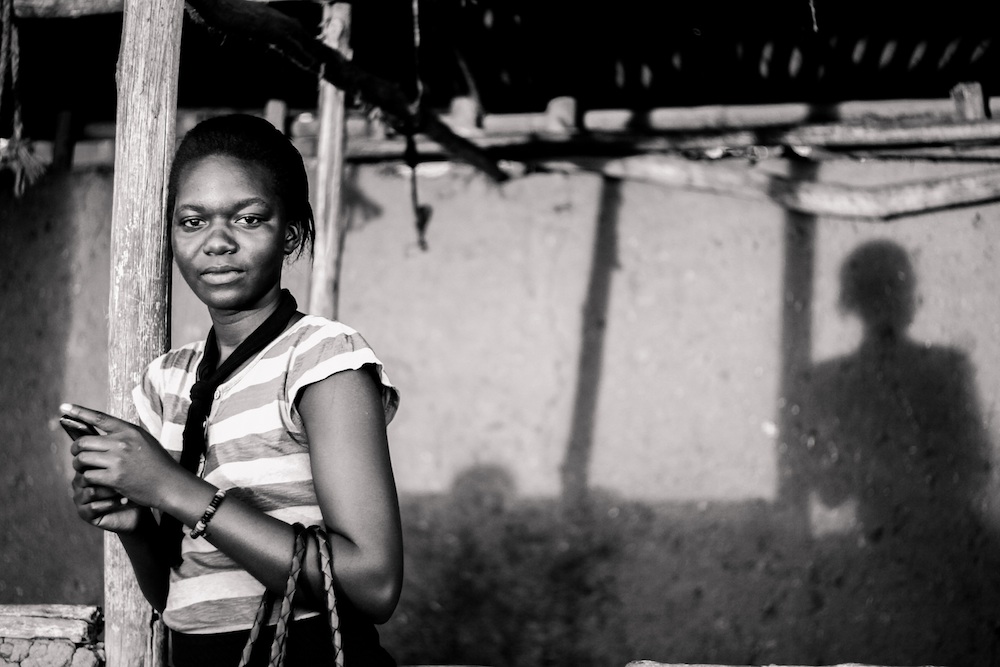Author Archives: jrdijkstra
The new African Photography
African photography is on the rise. From street to art photography, conceptual and documentary to fashion photography, homegrown photographers (not only in the Francophone-African countries) are increasingly stepping up to show their world what they see when they look through the lens, following decades of photographic misrepresentation, or reduction, by observers from outside the continent.
Not only is Emeka Okereke (1980) one of the Nigeria’s most high profile contemporary photographers, he is also the founder of Invisible Borders, an artist-led initiative that brings several upcoming African artists together for an annual road-trip in order to question the photographic representation of their continent. ’A photograph is a window and not the view. Don’t photograph what you see, photograph what you feel’, he tells the participants. That’s what he does himself and it’s an approach that allows him to explore questions of co-existence, otherness and self-discovery. Okereke’s work often includes subtle references to socio-political issues, which he also addresses by non-photographic means: poetry, video and collaborative projects.
‘There is a sense of responsibility in my work, together with consciousness. I want to show the public the changing situation of Africa, but first we need to sensitise them to actually be able to see this.’ By deciphering hidden lines and using his travels and experiences – Okereke lives and works between Africa and Europe – he tries to understand the world he’s living in from an African point of view. ’Only after that can I try to make the rest of the world change their perception of our continent. By putting emphasis on the way we live our lives I try to steer away from the negative (stereotypical) image that people have of Africa. We have our own kind of organisation, that comes from improvisation’, he explains. He points out though, that this is a very tricky subject. The pitfall of romanticisation or commodification beckons, and with those you miss your goal. ’Emphasising either extreme just works in an averted way.’
For Okereke, Africans don’t have to justify themselves to anyone. Nowadays, African artists and photographers are forced to take a stance and make a big deal out of what they do, he says. ’Where we actually should take the freedom to show or tell what we want, be creative and try to find the right balance. It’s almost a cliché, but somehow Africans don’t see that they can investigate their own position and that way be active without getting boxed in to a issue. Because if they divert, they won’t get noticed anymore. We’re not free to do what we want yet.’
Part of the reason why Okereke has such an outspoken opinion about the status of photography in Africa is because he’s been part of the Depth of Field collective (DoF) for over ten years. Just two years after he came in contact with photography in 2001 and not even five years after he first touched a camera to capture his siblings going to church, he became the assistant of another Nigerian photographer, Uche James-Iroha. Uche was one of the founders of the group of six professionals in DoF and being around him every day eased Emeka’s way into the collective as the youngest member. ’It was like the school I never had. Not just a project, but a way of life. DoF is a group of friends actually, who when they get together talk solely about the photographic portrayal of Africa, aesthetics and their subjects.’ Together with colleagues like Kelechi Amadi-Obi and Akinbode Akinbiyi, Uche created a sort of a radical environment for Okereke. It quickly resulted in honour and praise, with Uche winning the Best Young Photographer award at the Bamako Photo Festival in 2003.
‘Photography is a powerful tool and I do feel that I have a task to fulfill as a photographer. Sometimes situations that cannot be explained, can be shown. My pictures are not merely images, something static. They’re windows to possibilities, can be read and interpreted differently, lending themself to the flexibility of shifting contexts.’ Okereke, who has exhibited in biennales and art festivals in different cities around the world, is constantly looking for answers, not paying heed to received wisdom. He just wants to see Africa anew by experimenting within his own reality, with history as his guide. He is optimistic, and why wouldn’t he be? ’There is a lot of energy flowing through Nigeria when it comes to the future of photography. The audience is positive about our work. Young people are very interested in new directions to follow and internet gives them a stage to show their images to the world. And all over the continent female photographers are stepping up, watch that!’
According to Okereke, the rise of African photography goes hand in hand with the growth of an entire ecosystem. ’There have to be people writing about photography, galleries showing it, videographers willing to cooperate and bloggers spreading the work’, he explains. ’It’s a new generation of students and young professionals that is concerned with this, all to create a better understanding of the work of photographers. Education within these sectors is therefore a very important factor.’ This explains why he organises projects with artistic interventions, promoting exchanges that cut across indigenous and international platforms. He led the first ever photographic exchange projects between a school in France and one in Nigeria. ’I tell these students that they can photograph anything; there are no boundaries. If they diversify, the complete story will come out. You need to see the potential, be sensitive to talent and give people room to grow.’
Wherever he is, Okereke’s photography is African. He doesn’t feel that he has to explain why his work is African, because he is one himself. The moment he starts to fight that, he says, he’d box himself in again. ‘It’s just a different context. What is going to change the perspective of Africa is not what you do or how you do it, but what influences you and what you show the outside world. I allow myself to change and let myself become an embodiment of that change. My photography will reflect that and hopefully affect others and their perceptive.’
Read the original article on This is Africa
Photography as a medium for social change
African photography is on the rise. From street to art photography, conceptual and documentary to fashion photography, homegrown photographers (not only in the Francophone-African countries) are increasingly stepping up to show their world what they see when they look through the lens, following decades of photographic misrepresentation, or reduction, by observers from outside the continent.
‘I believe in the power of still images’, proclaims Mario Macilau (1984). The Mozambican photographer uses his photography as a tool to change people’s minds about the world we’re living in, focusing on the living and working conditions of socially isolated groups. ‘I’m mostly thinking about how my work can contribute to changing their situation. As a social documentary photographer I try to break the silence surrounding them and bring their identities, which have been hidden for too long, to the foreground. Hopefully this will cause some social impact.’
Activism for progressive change has always been integrated into the work of the young artist from the city of Maputo. Operating within a global movement fighting for social justice, peace and environmental issues, Macilau constantly confronts his audience with the power of realism. Born in the newly independent Mozambique in the midst of the most critical phase of its civil war, his family struggled. ‘Plants do not choose the garden in which they flourish and blossom’, he writes in his biography. Having worked since he was just seven years old, he started taking pictures just ten years ago, reaching a professional level in 2007. ‘Now I specialize in long-term projects on living and environmental conditions, striving for a positive change across different cultures, locations and perspectives.’
Macilau, whose images have been described as ‘alarming and provoking, arresting and engaging, public and private but, above all, utterly human’ does not expect people to tell him how amazing the compositions of his work are, because he would rather have them read his work deeply. ‘What I shoot is quite sensitive and I want it to create a line of discussion, to provoke. The power of the image together with my believe in my subjects motivate me to photograph their situations.‘ For Macilau it’s about sharing their testimonies, while directly reflecting on his own experiences. ‘I believe that the path of life has made me who I am and I learned from that. It would be easy to say that, if born somewhere else, I would have different views, but if you don’t experience something, you don’t know. My life is not based on imagination, but on experience. I was born in Mozambique and I am still based here, a fact that is important in my personal and professional life.’
Even though he didn’t know how he could use photography as a source of income when he started out ten years ago, Macilau did believe in the medium as a stage to get his message out. Yet he admits to not knowing much about how critics perceive his images: ‘What they say is more virtual than real. There is a difference between misinterpreting an image and using a photograph to tell a different story than it was meant to do’. With that statement he aims at a century of photographic misrepresentation of the African continent. According to Macilau, who won both the Visa pour la Creation in France and the Protection Project Award in Washington last year, the world is filled with cameras these days and regardless of the past, we should look at how photographs are getting used right now to portray the continent and Mozambique in particular. ‘As professional photographers we should aim at painting a complete and coherent image, instead of letting amateurs tell a misleading story with sensational photographs.’
To do this he focuses on the different aspects of everyday life in his work. What brings a big difference when comparing photography to paintings or drawings is the fact that ‘the people are becoming part of your portfolio, including their real lives, identity and stories.’ This reality, says Macilau, must be seen by others in order to see the impact and changes they’ve gone through in the future. ‘They may be different, their stories might change, just like their way of thinking. There is not a singular image of Mozambique I intend to show. It changes constantly and I use my photography as a tool to show people’s lives to the world.’
This is not an easy task though. As Macilau explains, artists in Mozambique are marginalized by people from the outside (like tourists and media) and the inside – collectors. He has to continue fighting and dreaming and even though he could choose to go abroad, he prefers to stay in Mozambique because it’s the best way for him to articulate the experiences of the people there. ‘I grew up there, I lived the same life [as my subjects, ed.] and I know what in their hearts and minds. It’s easy to understand each other and build a relationship, but as a photographer I also like to explore new worlds, work outside my comfort zone and discover different places.‘ Good reasons, especially when you consider that the recent economic growth hasn’t done anything for the popularity of photography in his country. ‘There is simply no social development here. Without it, emerging artists have a gloomy future. But we simply cannot force it. It’s not about the quantity of the images, but the quality.’
What challenges the progress of photography in his country? ‘Young people in Mozambique are very afraid to take risks’, explains Macilau. ‘These days a lot of people come to me, saying: you travel a lot, I want to become a photographer and do the same. Young people have to first work on building a portfolio with strong images. They dream too much. South Africa for example does provide a lot of good spaces for young artists like Sabelo Mlangeni to develop themselves first.’ There are some good ‘new generation’ photographers in his country, such as Mauro Pinto and Filipe Branquinho. Macilau also points out Michael Tsegaye (Ethiopia) and Sammy Baloji (Congo) as examples of young talent.

The African continent needs this new talent in order to correctly represent itself in the future. ‘We’re no victims. No matter what we have been through, we’re still here with the intention to achieve something. I hear people complain all the time, instead of fighting for what they believe in. Too much theory and not enough practical effort to change the situation, just like a lot of young photographers. They have to understand the world is more than just the continent we’re living in. We’re not special because we’re Africans, but because we’re human beings like everybody else and live together on the same planet.‘ Macilau therefore focuses on the present, but never looses sight of the future: ‘If today it’s raining and you don’t remove your clothes when entering the house, what will you wear tomorrow?
Read the original article on This is Africa
Before They Pass Away
TeNeues, 2013.
424 pp, 4 gatefolds, hc w/ jacket, 402 color photographs, 11,5 x 14,5″
ISBN: 9783832797591
He sees himself as a messenger, not in the biblical sense of the word, but a visual one, in the form of a photographer. Over two and a half years, Jimmy Nelson (b. 1967, United Kingdom) travelled around the world capturing tribal cultures on the brink of transformation due to the technological expansion that soon will reach even the most distant corners of the globe. Nelson saw it as his task to capture the traditional lives of these shrinking communities, bringing the images together in his new book, Before They Pass Away.
Carrying a 4×5 field camera to 44 countries, from islands in the South West Pacific Ocean to the Artic Coast, from the Amazon rainforest to the Tibetan mountains, Nelson embarked on a journey of visual anthropology. The 29 different tribes he portrays are still authentic, unspoiled by the effects of globalisation, their lives still dominated by rituals and efforts to survive the harshness of nature. Yet, it’s not exactly those aspects that Nelson has focused on, instead posing them for close-up portraits and group photos on locations that offered the best lighting and backgrounds. He even got two tribesmen in Vanuata to stand on top of a mountain, posing with their bows, waiting for the perfect ray of sunlight. The result is that, although the images show the tribesmen’s deep and passionate knowledge for the nature in which they live, it does not particularly reveal their real lives, but rather, a representation of how their lives look from the perspective of an outsider who has a directorial vision.
“I am teaching the developed world what they have lost and enlightening the underdeveloped world what they still have,” Nelson explains about the project. “Most importantly, I wanted to create an ambitious aesthetic photographic document that would stand the test of time. A body of work that would be an irreplaceable ethnographic record of a fast disappearing world.” While it’s impossible to ignore the irony of exposing isolated groups to the full Hollywood-style crew and equipment treatment that Nelson used, and the implicit conflict of interests, the results are beautiful, however biased.
A master composer, Nelson managed to get whole tribes to climb into trees, stand atop of a volcano and pose in the freezing cold. Combined with intimate portraits, the resulting 400 images in Before They Pass Away move between macro and micro levels, showing a wide variety of human experiences and cultural expressions. The exoticism of tribes like the Rabari, Mursi and Himba sound so remote, but Nelson manages to bring them much closer. Their costumes and rituals may seem unfamiliar, but Nelson portrays families and family members in a dynamic recognisable even to a Western family.
Although Nelson saw it as his task to truthfully document the lives of these people, the photos in actuality are rather glossy and romantic. It seems contradictory that Nelson wanted to portray these ‘untouched’ tribes in their natural habitat, yet completely arranged the setting and his subjects in an unnatural way. All the people are in the perfect place at the right moment, fully dressed up and prepared for the shutter of the photographer. Warriors walking through the bush, an elderly man standing on top of a holy mountain or a woman sitting in a desolated desert: he staged it all. Yet the benefit to this is that much can be seen in the photographs. Nelson succeeds in showing us the tribes in their full glory: the richness of their individual cultures, the strength of their solidarity and independence.
Read the original review on OnPhotobooks or GUP
Barbara Minishi is exploring her own ‘unique visual DNA’
African photography is on the rise. From street to art photography, conceptual and documentary to fashion photography, homegrown photographers (not only in the Francophone-African countries) are increasingly stepping up to show their world what they see when they look through the lens, following decades of photographic misrepresentation, or reduction, by observers from outside the continent.
Barbara Minishi shoots from instinct. ‘I immerse myself in my work and stay open to surprises’, she explains. ‘It’s easy to get set in a particular way of doing things, but I find that by following what I’m curious and excited about, and therefore what challenges me, I grow.’ What she’s scared about, the unknown, for instance, galvanises her. ‘That fear, a certain kind of vulnerability is necessary.’
Minishi first came in contact with photography at an early age, when she played around with her father’s camera. At university she primarily shot as a way to avoid participating in other activities, but her work got noticed by the uni’s PR-department and she got hired as a photographer for the school paper. ‘I didn’t realise it was what I really wanted to do as a career until I had a ‘eureka!’ moment a week after graduation. I realised photography was what drove me and held my interest. With it I had a voice and could focus on the subjects I wanted to show the world.’
After an internship with one of the few photographers in Nairobi with whom she shared the same vision with respect to photography, Minishi started shooting her own documentary stories, teaching and challenging herself by just doing it because the schools to which she applied for further training charged steep fees. ‘Photography is a daily learning process that I got on Nairobi’s streets’, says Minishi. ‘I just love watching, observing and noticing, witnessing the ordinary and capturing that. Whether it be in fashion, commercial, documentary, art or portraiture, I relish the act of creating a strong constructive element, the ability to tell stories, the freedom to explore concepts and to challenge clichés.’ Photography is for her Minishi a playground that provides her with an audience and a chance to re-imagine, connect and learn.
‘There are no proper schools of photography here in Kenya, but I feel the concept of visual literacy needs to be incorporated into our educational system as we are all sensitive to visual nuance and sometimes images get misconstrued.’
While she isn’t solely concerned with changing opinions, she does find it odd whenever someone says her images “don’t look Kenyan,” particularly as Kenya is where she grew up and went to school, and she mostly shoots Kenyans in Kenya. ‘Some people get really surprised by the calibre of my work, and by my aesthetic and manner of working, and assume it’s because of foreign influences. However, it’s the opposite that’s true. I focus on different subjects, and I think these do not automatically equate to being in one place. Sometimes getting out of your zone or circle of influence provides the opportunity to look at things from a different way.’
About one thing Minishi is really clear: that her vision is not based on a quest. People can interpret her work however they want, whether they choose to view it as a sort of movement or not. ‘It’s their assumption but not my reality,’ she points out. ‘Maybe it’s because for too long a certain kind of image of Africa was mostly seen and now that there are more and more African photographers doing their own visionary work the rest of the world is starting to notice and calling it as a ‘quest’. I don’t think it is. I believe it’s simply photographers doing what they want to do and more people being receptive to our work.’ As a result she feels people sometimes get stuck discussing and analysing viewpoints about photography from Africa and forget that life is going on. ‘I would rather shoot more quality photographs than talk about the lopsided view. I’m really not concerned about cementing myself in the past.’
Sometimes however the rising photographer feels that she does get stuck in a ‘victim’ mentality as she talks too much about the past and external negative factors. ‘I forget that we are in the present, the now. Of course there’s history, but I can’t carry this around like excess luggage all the time and use it to justify how and why I shoot images. I have learned from it and still do, but don’t want to stay focused on it anymore. Learn from the past and move on, just like you deal with other difficulties. Use it to your advantage!’ No wonder her aim is to broaden her horizon and work worldwide, a goal she’s clearly already taking little steps towards.
Asked how she’d like to portray Kenya, she shrugs: ‘Kenya is what it is. Truth is subjective and my truth is not necessarily that of others. So I don’t want to concoct any kind of image about my country.’ Her opinion about the development and limitations of photography in Kenya are just as clear: ‘Limitations exist based on an individual and how they view the world’, she says. ‘Pondering it doesn’t change anything and with the resources I have I am developing myself as best as I can. Of course I don’t have all the equipment, tools, or access or outreach I want, but this doesn’t stop me. I do what I can with what I have.‘ Whether the continent’s rising economy is being reflected in the popularity of photography in Kenya is for her also a non-issue: ‘It has always been popular in Africa, irrespective of the economical status. Same for Kenya.’
She sees the photography scene growing nonetheless, and she finds it ‘exciting and dynamic’. But she is careful about looking at other photographers’ work, in order to stay unique. ‘The challenge is always to create a cohesive story. Sometimes it happens, other times not.’ That there is a difference in the way situations are portrayed is natural, she believes. ‘Some people choose one angle, others another. I’m not grading another photographers work on what they may have failed to see and then take it on as my responsibility to get another opinion out to the international market.‘ And it’s not solely an African or non-African issue. ‘Both have their own failures, and I know that there are also foreigners who are indeed telling honest and beautiful stories about our continent.’
Minishi stresses the point that her aim is not expressly to be different from other Kenyan or foreign photographers for the sake of standing out. Rather, it’s a lifelong process of exploring her own ‘unique visual DNA’. ‘I believe following what you are attracted to irrespective of what others say or do is the way to work. Of course you can learn from constructive criticism and get inspired by others photographers’ work, but I think it’s brilliant to have our different backgrounds influence our storytelling.’ What that will mean for her in the future is unknown. ‘The present is changing as the seconds tick by’, she says. ‘Therefore I focus on growing now, exploring and developing my vision on Kenya and the way to show this to the outside world though all manners possible.’
Read the original article on This is Africa
Mud, Sweat and Beers
Richard Avedon: People
While the rest of the Western world already knows Richard Avedon (1923-2004) as a revered 20th-century photographer, he’s not that famous in Australia. The National Portrait Gallery in Canberra therefore has set out to offer audiences the first broad-ranging exhibition of Avedon’s work in the southern hemisphere. Considering that The New York Times proclaimed in Avedon’s obituary that “his fashion and portrait photographs helped define America’s image of style, beauty and culture for the last half-century” and Le Monde described him as “the most lucid observer of our society”, there’s only one thing to say: it’s about time.
Avedon is perhaps most readily known for his fashion photography, and it’s true that he produced iconic fashion photographs that defined his time. Canberra’s new exhibition, entitled People, rightfully explores that aspect, but of course there is more behind the man that shot celebrities like Brigitte Bardot, Jacques Cousteau, Andy Warhol, Marilyn Monroe and the Dalai Lama. The focus turns instead to his groundbreaking portraiture. He might have started out shooting for Harper’s Bazaar and Vogue, but this was right after he photographed thousands of American sailors during World War II, working as a photographer for the Merchant Marine. At the core of his artistic work was a profound concern for the emotional and social freedom of the individual in society. This concern is exposed the most in his portraits that, with their clarity and boldness, emphasise the reality of his subjects’ lives, combined with an ever-present sense of motion.
“My photographs don’t go below the surface. They don’t go below anything. They’re readings of what’s on the surface. I have great faith in surfaces. A good one is full of clues”, he wrote in 1970. To investigate those surfaces, he documented street life in New York City with his Rolleiflex on commission by Life Magazine, shortly after World War II. After nine months of shooting however, he reconsidered, returning his advance and holding back the images. These were eventually published in 1992, in his book An Autobiography. Chris Chapman, the curator of the People exhibition, decided to include these images in the display, after two and a half years of deliberating with the Richard Avedon Foundation in New York, the city where the photographer spent most of his time.
The eighty works that are on display at the National Gallery include shots of hard working farmers, inmates of a mental hospital in the ‘60s (published in his book Nothing Personal, in collaboration with writer James Baldwin and designer Marvin Israel, 1964) and of course plenty of his revealing portraits of the last century’s luminaries – including a two meter tall shot of choreographer Merce Cunningham. Six decades worth of career as a fashion, portrait and documentary photographer captured in one exhibition, “to illustrate his strikingly diverse aspects and to bring out what is at stake for him as an artist, as a photographer, his absolute concern for creative freedom, the creative rights of the individual society”, according to Chapman.
The exhibition also includes the five-year portrait chronicle Avedon embarked on in 1979, the series called In the American West, portraying men and woman who work difficult, uncelebrated jobs – the often ignored or overlooked. The Avedon Foundation described this work as his magnum opus. The choices he made about who to portray were completely subjective but, perhaps when it comes to photography, everything is. “The moment an emotion or fact is transformed into a photograph it is no longer a fact but an opinion,” Avedon said. “There is no such thing as inaccuracy in a photograph. All photographs are accurate. None of them is the truth.”
While with his celebrity photographs he resisted idealisation, desiring to reveal the humanity of revered individuals, in his fashion photography, he demanded that the models convey emotions – a departure from the norm at the time. Chapman said in an interview that one of the main innovations in Avedon’s style was to take models out of the studio and into the streets, explaining that they “give his work from that period a fantastic sense of dynamism and flair”. Yet, with his portraits, whether of the famous or the unknown, he isolates his sitter against a plain white background to extract them from their surroundings, placing them face to face with the viewer. Adorned only with the intact black edges of his film, the purist’s mark of authenticity, the style of these images defined the Avedonian portrait. The results raw, intimate and powerful.
In his home country of the United States, Avedon is one of most widely exhibited photographers, from Washington’s Smithsonian Institution to New York’s Metropolitan and Whitney museums. And, as perfectionistic as he was, museums exhibiting his work must conform to his rules. For example: the images that exist solely as negatives cannot be turned into exhibition prints. No wonder Chapman had to travel to New York several times to discuss his choices with the foundation. Luckily, there is no shortage of exquisite images to display.
The exhibition Richard Avedon: People is on display at the National Portrait Gallery in Canberra, Australia until November 24, 2013. After which it will tour to the Art Gallery of Western Australia and Melbourne’s Monash Gallery of Art next year.
Read the original article on GUP
LagosPhoto 2013: The Megacity & Non-City
One of the most important photography festivals in Africa, next to Les Rencontres de Bamako in Mali, is LagosPhoto, which this year will be held for the fourth time from October 25 till November 24 in the capital of Nigeria. Being the first and only international photography festival of the country is has appropriated itself the task to promote African photography from national as well as international photographers around a central theme, this year ‘The Megacity & Non-City’. Within this subject photographers tend to looks at both the development of urban centers and the influences of technology, the internet, and the digital revolution in Africa. They will also investigate how these factors have transformed photography and their sense of place in a globally connected world, exploring the relationship between photography and social conditions on the continent.
‘We want to form an answer to the stereotypical images of poverty, conflict and famine with which the photographic representation of the continent is infested’, according to founder and director of the festival Azu Nwagbogu, a native Lagosian. ‘A more nuanced and balanced, well-rounded perspective in which the negative as well as the positive aspects are represented, with a focus on diversity, is what we want to show.’ Refreshing, new and engaged, that’s what photography at LagosPhoto should be. That way Nwagbogu wants to show his audience what African photography has to offer, not what it lacks. From the expertise of domestic photographers and through the broad vision of their foreign counterparts. By extending to international photographers that work extensively on the continent they allow for a healthy dialogue between local and international artists.
Azu Nwagbogu
With over thirty photographers representing diverse genres as photojournalism, documentary, fine art, fashion and conceptual practices the festival extends outside of its official venue to include outdoor exhibitions in congested public spaces, with the aim of engaging the broader general public with photography. ‘As we started LagosPhoto with the predicament of photographers only focussing on the negative sides of Africa in mind, it is refreshing that now we are moving beyond this to focus on broader image-based work that approach fine art and conceptual practices, more on par with the international arts community. I think that negating the negative of African imagery is an important first step, but after that you need to step forward and show what is new and engaging.’ Nwagbogu has observed a massive change in the way the continent is represented through photography since the festival started. By focusing on great balanced work others are encouraged to capture these sorts of stories and imageries, which add value and importance.
There is a thriving community of emerging photographers in Nigeria as well as in other African countries who decide to stay local and document the experiences of their environment. ‘They of course have the advantage of specific knowledge and an intimate relationship with their surroundings, but also travel and document other cultures and experiences. With the right tools to tell their own stories the can reach great results’, says Nwagbogu, who himself is motivated by that progress. ‘LagosPhoto is organized by a very small and hardworking team, and each year the festival grows to an unprecedented level. We are focused on creating a community for photography to thrive and it’s good to see how interesting that community has become.‘ With LagosPhoto Nwagbogu is looking to build an institution; an entity that is self sustaining and relevant beyond our days. As for African photography, we knows that it will continue to grow and is are excited to be a part of this growth process. ‘Everything in Africa is unique and most of the time very complicated; therefore more exciting and interesting. That makes me humble while also inspiring me in equal matter. Our festival will keep on growing and service the continent.’
Read the original article on This is Africa
A movement of new African photography
Conflicts, poverty, diseases and misery those are unfortunately still the general aspects with which foreign media characterizes the African continent. Heartbreaking images just sell a lot better then pictures of happy, smiling Africans. Yet there are enough photographers, domestic and foreign, who are also willing to show the other side of life and go in-depth to portray Africa through the eyes of professionals who actually do care about this continent.
The visual resurrection of a continent
Giving those without a voice hope and a goal, that’s why Joe Lukhovi undertakes on his endless journey to photograph the real life in Kenya. The 24 year old photographer from Nairobi feels it’s his duty to show the ‘invisible reality’ of his African home country and shine a light on those aspects that many foreigners never get to see. Without any photographic education – those were not available in Kenya at the time – he just went into the streets and developed himself into a documentary photographer. ‘Photography is my way to let the identity of closed communities emerge. It’s plainly wrong to only show the negative sides of a country and skip the positive ones. We have been the victim of twisted foreign reporting that only serve the wrong purposes. As an African it therefore feels as my task to show people the true image.’
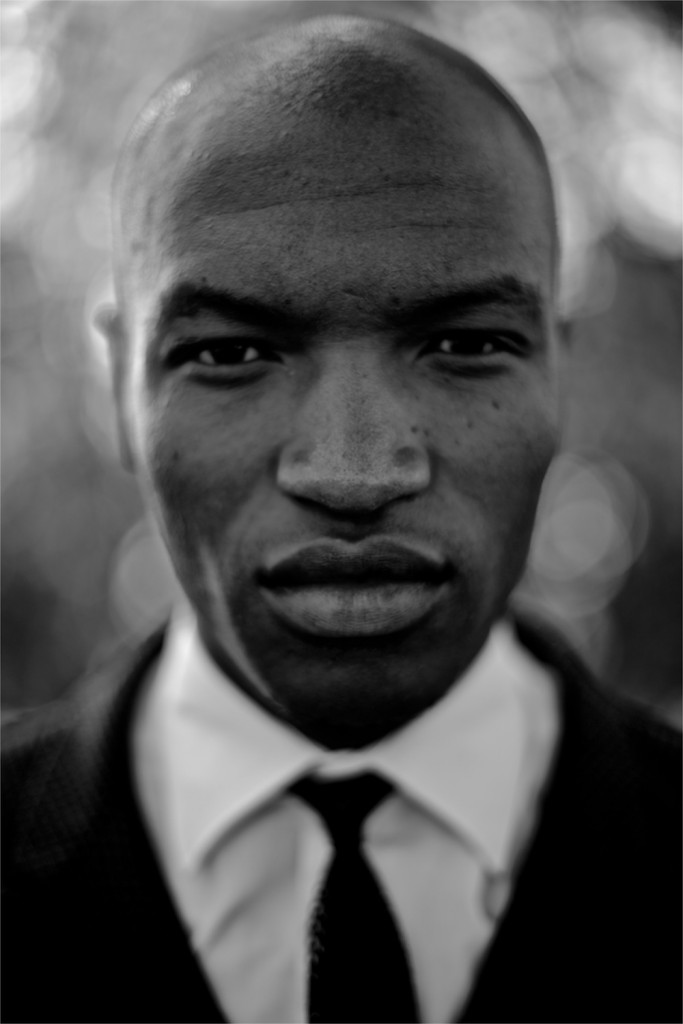 Portraits of Africa © Anthony Bila
Portraits of Africa © Anthony Bila
Lukhovi doesn’t stand alone in his opinion about the imaging that since decennia exists of the African continent. Also the South-African Anthony Bila, founder of the picture blog ‘The Expressionist’ and also autodidact, is tired of the misconceptions and prejudices about his continent. ‘That’s why I take it to the streets in South Africa to show my country on a day to day basis. I won’t to step off the one dimensional view that is being fed to us by international mass media. Africa is anything but lost, instead it’s a place full of possibilities and beauty. We Africans can tell our own story in our own way.’ Putting the continent into a new perspective, with a fresh and new look and at the same time show a deeper layer. That’s exactly what a new wave of contemporary photographers who work on the African continent have in mind. And luckily they’re not alone in this, because a growing number of international colleagues support them.
Europeans in Africa
Like the 33 years old German photographer Marc Hofer for example, who quit his successful job at Microsoft to chase his dream of becoming a photo journalist. From his post in Kampala, Uganda, he covers South and East Africa with a refreshing point of view. ‘In the contemporary photo journalism on the African continent I see to much artistic manipulation. Foreign photographers only think about what their audience wants to see, not about what they should actually show. It’s so easy to get carried away by what sells, but at the same time very dangerous. It’s the main reason that Africa at this moment has such a bad and negative reputation; photographers have been looking and portraying this continent in a much to simplistic and sensational way for much to long.’ He as well sees an image that therefore is solely focussed on problems and conflicts, but there is hope. Hofer sees himself as part of a countermovement that has been growing the past few years: foreign photographers who try to broaden the vision on Africa by capturing the continent with an open mindset. ‘Well informed professionals who dive into background stories and show all sides of a story.’ Together with the their domestic colleagues they can create a context and reach international media, resulting in a more balanced picture of the continent that can actually contribute to improving the living situation of many Africans, instead of being counterproductive.’
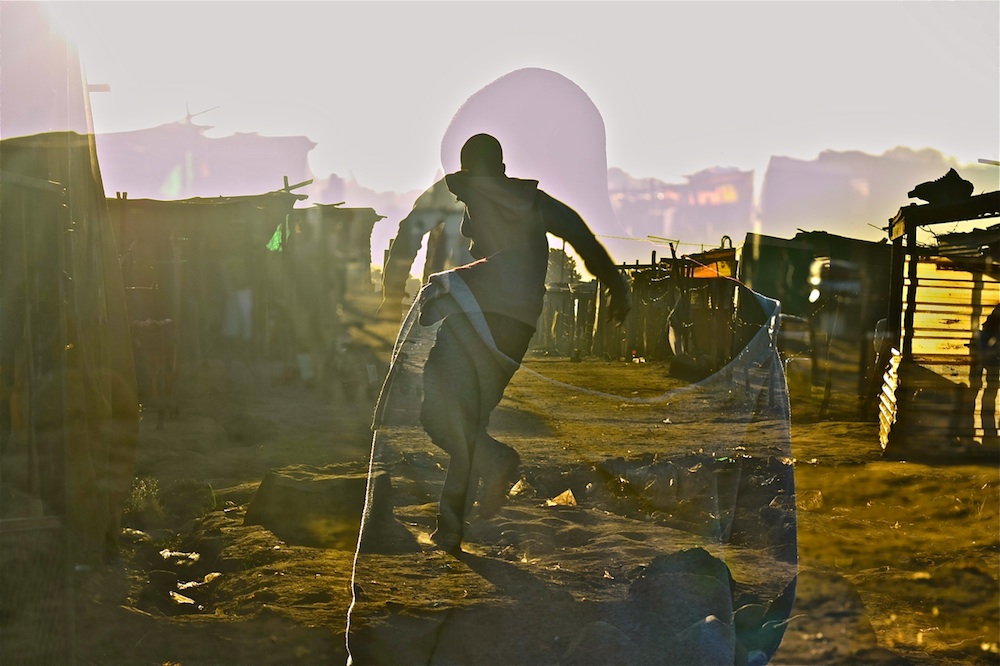 Township Diaries © Anthony Bila
Township Diaries © Anthony Bila
While Bila in Johannesburg goes into the townships to photograph the fashion and street cultures, Lukhovi visits the garbage dump of Dandora in the east of Nairobi for his series ‘Scavenging Boma’ to show the hope that can radiate from even the hardest of realities of living in wretched conditions. ‘I want to show South Africa to the world and the world to South Africa’, says one. ‘With my images I try to show the hope and success of people’, continues the other. ‘Our continent is full of blessings and even though it gets tagged as lost, there are more the enough beautiful and exhilarating stories to be told. Photography is the best medium to show these hopeful sides of the continent.’ That’s exactly the reason Dutch photographer Martin Waalboer uses it to capture the life in troublesome countries like Liberia (where he documented the life in the town of Harper), Ivory Coast, Burkina Faso and Guinea-Bissau from a cultural and artistic point of view. According to him foreigners have seen so much extremes coming from the these places, that they consider it to be normal. ‘Therefore I focus on average people, like a chronicler of daily life. We should be reporting like it’s a freak show over there, but find special things in the ordinary. They’re also just people like you and I’, he reflects.
 A Town Called Harper © Martin Waalboer
A Town Called Harper © Martin Waalboer
Different yet the same
Whether they’re domestic (Lukhovi and Bila) or foreign photographer (Hofer and Waalboer), they share the same values and goals: change the cliche image of Africa, step away from the stereotypical sensation coverage and go in-depth with the people. Even though getting published when covering stories about day to day life, the all want to keep showing the possibilities and potential of the countries they operate in through photography. Like Bila did with his ‘Township Diaries’ and ‘Portraits of Africa’ for example: personal projects that go deeper and show a fascinating aspect of a continent that deserves a more balanced photographic coverage then currently present in international media. If this growing group of conscious photographers together with their national and international dedicated colleagues can really change the image of the African continent in foreign media is a question that cannot be answered yet. ‘At least we can try’, they all agree, ‘to take away some of the preconceptions and misconceptions by portraying common people and documenting daily life’. According to them Africans shouldn’t allow outside media to tell them what is happening in their own countries: they should take matters into their own hands and take control of the imaging on their continent. Luckily this sense of responsibility is growing and by collaboration with counterparts from abroad this new image of Africa will eventually reach foreign audiences. Only is this way can they together take away this mark of lost continent in a photographical way.
Read the original article on This is Africa
Waits/Corbijn ’77-’11
Schirmer/Mosel, 2013
272 pp, lim. edit. 6.600 ex., 226 color/duotone plates
ISBN: 9783829605557
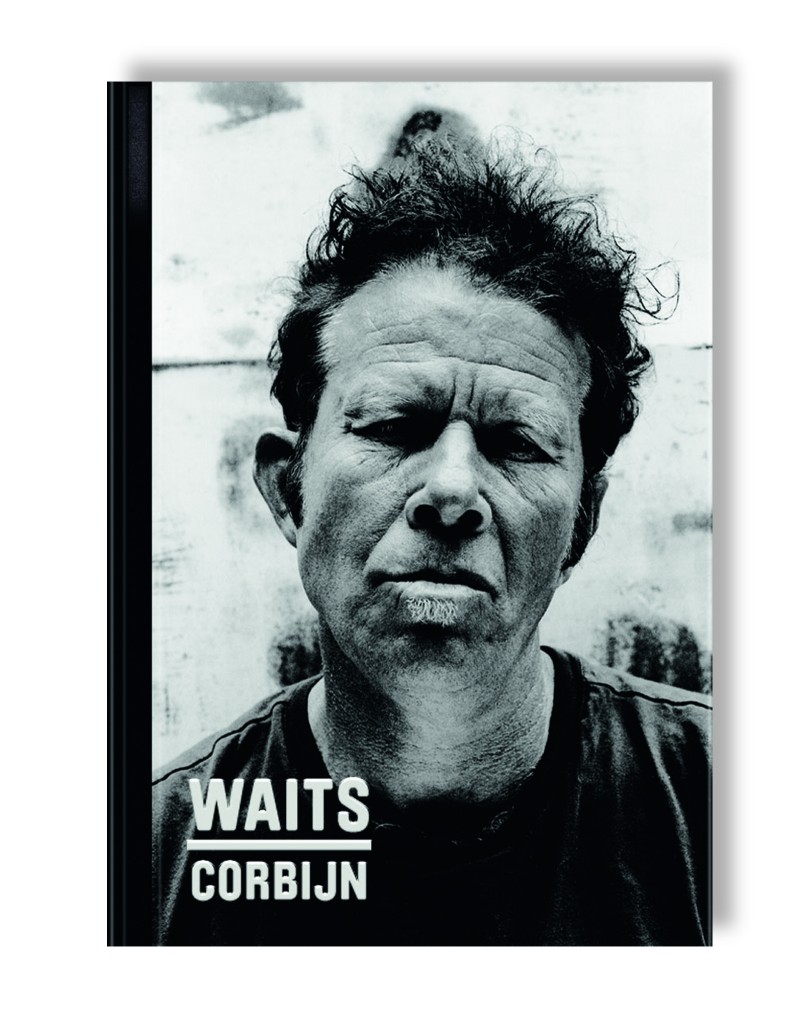 A new photobook from Anton Corbijn (1955) is always a good reason for a lot of media attention and a grand presentation. Earlier this year it was time for a moment like that again, this time for Waits/Corbijn ’77-’11, a combination between the work of the rockstar amongst Dutch photographers and the musical star Tom Waits. The amount of artists that Corbijn shot is almost uncountable, but the chosen ones which he actually dedicates a book to are scares. Starting with Depeche Mode of course, followed by the German singer Herbert Grönemeyer, the unforgettable work he did with U2 and not to forget the Dutch rock & roll junkie Herman Brood. And now there is the book about Waits, whom he met in 1977.
A new photobook from Anton Corbijn (1955) is always a good reason for a lot of media attention and a grand presentation. Earlier this year it was time for a moment like that again, this time for Waits/Corbijn ’77-’11, a combination between the work of the rockstar amongst Dutch photographers and the musical star Tom Waits. The amount of artists that Corbijn shot is almost uncountable, but the chosen ones which he actually dedicates a book to are scares. Starting with Depeche Mode of course, followed by the German singer Herbert Grönemeyer, the unforgettable work he did with U2 and not to forget the Dutch rock & roll junkie Herman Brood. And now there is the book about Waits, whom he met in 1977.
Almost 35 years of friendship are covered in Waits/Corbijn ’77-’11, resulting in a photobook with 226 image; each a witness of a very fruitfull collaboration for both careers. Unfortunately the book is only available in a limited edition of 6.600 pieces for quite a steep price which can only be expected to rise ones this exclusive publication is sold out. Exclusivity is something that was to be expected from Corbijn: the book is bonded stylishly in linen and simply look stunning.
Even though most of the images consist of portraits of the eccentric Waits a quarter of the book is kept free for pictures from his own hand. A nice gesture from Corbijn, but for those snapshots you obviously don’t pay good money. Even though they will help to understand the person Waits better, according to Corbijn, the singer should stick to making music. The intimate pictures the better photographers shot however, are pure world class. ‘Believe me, I don’t jump of a rock with a Dracula cape for anybody’, says Waits, a quote that says everything about their friendship that already lasts over three decades.
That relationship is visible on every raw, grainy, artistic or confronting image. Black and white is the composition that suits Waits and Corbijn best and next to just a few color images these form the overtone. Dark and harsh, that’s it, but because it concerns two friends you also find a hit of humor that they must have experienced when shooting. Waits couldn’t have asked for a better chronicler of his life than Corbijn.
Read the original review on OnPhotobooks




